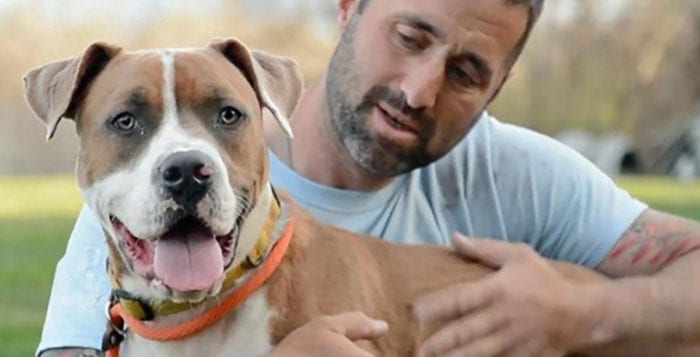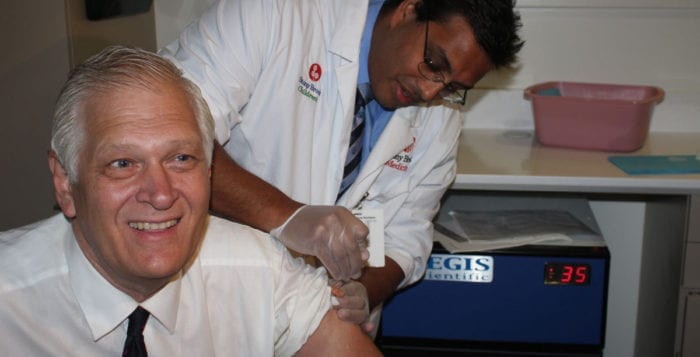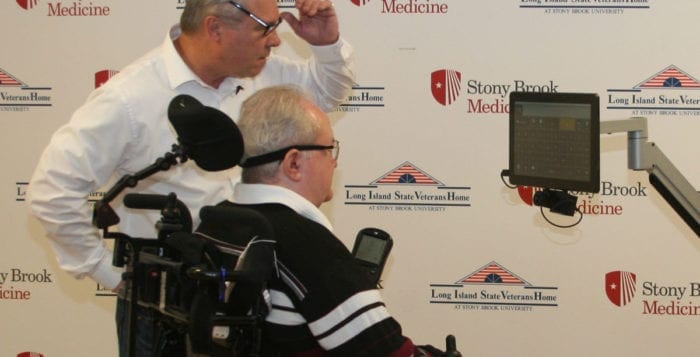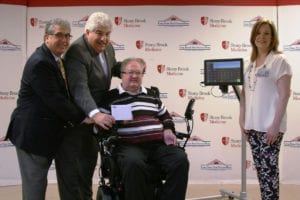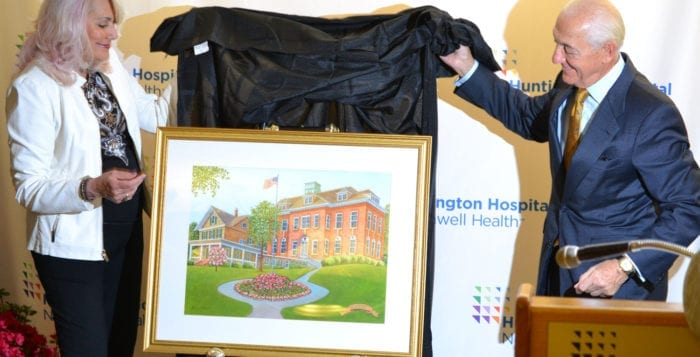A young state law is already breathing new life into the number of newborns burdened with whooping cough.
It has been three years since state Assemblyman Steve Englebright (D-Setauket) saw his Neonatal Infant Pertussis Act signed into law, and last week, members of the Pediatric Academic Societies said it’s already paying off, by reducing infections 50 percent. Both Englebright and Dr. Shetal Shah, who worked alongside the lawmaker in 2012 as a member of the neonatal intensive care unit at Stony Brook University, heralded the legislation as an effective measure to keep newborns healthy across New York State.
Englebright wrote the NPPA with Shah’s help, requiring Tdap, a vaccine against whooping cough, be offered to parents and caregivers in contact with a newborn during birth hospitalization as a way to promote “cocoon” immunity for the infant, according to Shah. Five months later the legislation was signed into law by New York Gov. Andrew Cuomo (D), codifying Shah’s common sense idea into law.
“That year, the New York Department of Health had already reported a three-fold increase in whooping cough since the previous year,” Englebright said. “It is gratifying to learn that this law is working and that children are being protected from whooping cough.”
Whooping cough, also known as pertussis, starts with “cold-like” symptoms such as fever, sneezing or a runny nose. It may then morph into a mild cough, which becomes more severe in the first or second week.
The NPPA fight started in 2012 when Shah reached out to Englebright’s office with an idea that he said could prevent whooping cough in newborns. In a statement, Shah said newborns are typically the most at risk of serious illness or death if infected. But with help from Englebright’s legislation, vaccinations have been effective in combatting the infection for newborns.
Using the New York Communicable Disease Electronic Surveillance System, Heather L. Brumberg from Maria Fareri Children’s Hospital and her colleagues obtained data from 2010 to 2015 on pertussis cases and hospitalizations for 57 New York counties outside of the city. In addition, they used state population rates in 2011 and 2013 to determine the incidence per 100,000.
During the study period, 6,086 cases of pertussis were detected, 68.8 percent of which occurred before the law passed and 31.2 percent of which occurred after. Overall, the pertussis incidence rate decreased from 37.3 per 100,000 children before the law to 16.9 per 100,000 after.
For children aged younger than 1 year old, pertussis incidence decreased from 304 per 100,000 children to 165 per 100,000 and pertussis hospitalization decreased from 104 per 100,000 children to 63 per 100,000 children. The NPPA was associated with these reductions, especially for those at high-risk, the researchers wrote.
“The data shows that passage of the Neonatal Infant Pertussis Act [NPPA] was associated with a reduced incidence of disease in children in each age group studied,” said Shah, who now works at Maria Fareri Children’s Hospital of the Westchester Medical Center Health Network. “This is associative, as we were unable to track actual parental and caregiver Tdap immunization rates.”
Whooping cough vaccine is a five-shot series that is recommended for children at 2 months, 4 months, 6 months, 15 to 18 months, and again at 4 to 6 years of age.
The pertussis vaccine is short-lived and can wear off within a decade, so some people who were immunized as children are no longer protected in adolescence or adulthood unless they get another booster shot.
“This should provide some degree of scientific impetus to other states and counties to consider this measure as part of a comprehensive strategy to reduce whooping cough,” Shah said.


